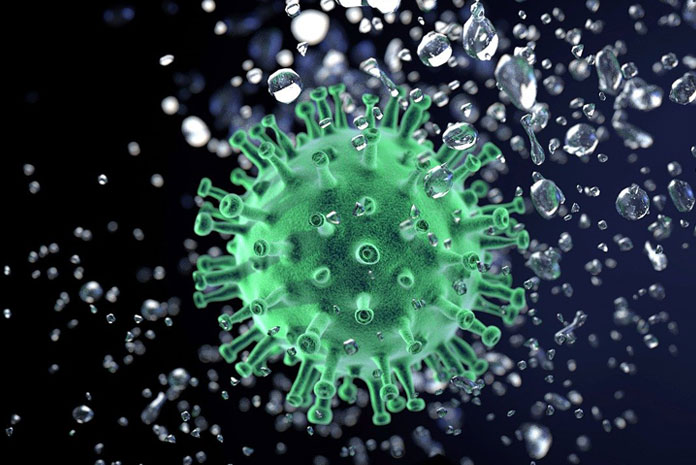By Abhijit Sengupta, Director and Head of Business, India, SAARC Region and Southeast Asia, HERE Technologies
After a whirlwind of 2020, the new year has offered a glimmer of hope that the pandemic would soon come under control. With the massive global vaccination drive now underway, many countries are busy trying to procure as many doses of Covid-19 vaccine as possible. India has put its faith in vaccines of Oxford AstraZeneca’s Covishield and Bharat Biotech ICMR’s Covaxin. Hailed as the world’s first and largest ever adult vaccination program, through this initiative, 3.10 crore Indians have been vaccinated, so far. That is the good news.
Experience from the biggest logistics operation ever has been indicative of the scope of improvement in vaccine transport, storage and vaccination. All this to ensure that the available doses are efficiently used and no dose is wasted.
Against the background of what was applied in context with the testing and tracing of the virus, digital and scalable solutions will provide the required flexible, customisable and citizen focused approach for engaging the people.
This is where location centric solutions and data can hold the key. There are many ways that location intelligence can enhance the implementation of India’s biggest ever immunisation drive, from situation and supply chain awareness to informed forecasting, analysis and decision making. Seamless scalability, interoperability and people orientation can bring more value to the government’s ambitious vaccination programme.
Easy to use and scalable: Since the outbreak, governments and healthcare authorities have relied on Geographic Information System (GIS) and location mapping apps for real time visualisation, dashboards, data sharing, analysis, and planning. The same approach will be critical for vaccine distribution too. Digital maps can provide insights into real time visibility and predictive supply chain planning, including the identification of facilities capable of storing and delivering temperature sensitive vaccines. Using open source and enterprise graded cloud platforms available as service, the researchers and decision makers can model viral spread in the states and communities under various levels of vaccine induced immunity to calculate the minimum number of vaccinations in a community, thereby effectively limiting the viral spread of Covid-19. Combined with interactive maps, software development kits (SDKs), edge computing and the power of artificial learning and machine learning, the civic officials can easily map out distribution centers for vaccines in each community and calculate the number of doses required to meet the demand.
Flexible and customisable solutions to deal with shifting landscape: At present, India has deployed CoWIN as a technological backbone of the country’s immunisation program. It is tasked with the responsibility to register the beneficiaries and allocate vaccine centers, send text messages to them along with the name of their vaccinator as well as ensure live monitoring of cold vials. Expansible and customisable digital solutions would be key for effective rollout, scheduling, and implementation of the system and overall vaccination process. One of the lessons the pandemic has taught us is that circumstances can quickly shift with new information and unexpected chains of events. In order to successfully scale and accelerate the vaccination programme, authorities must be able to pivot their distribution strategy swiftly and easily.
Using satellites, GPS trackers, mapping software and GIS tools, the healthcare and government agencies can easily analyse the data to create a holistic information network for citizens, thereby highlighting where the vulnerable populations are, including elderly people and the time taken to reach them. Some other unique ways in which location can help are geo-fencing distribution centres and the regions they will serve, along with possible shipment destinations. Drones, with mounted thermal cameras, could help professionals to remotely screen and track areas which might require the second dose of vaccinations by monitoring physical and virtual traffic and hence prove helpful in minimising road miles, freight cost, risk exposure and planning of the most effective routes.
Citizen centric solutions: In addition to helping healthcare officials and authorities, solutions need to be devised in a way that is focused on meeting the needs of all citizens. Besides ironing out production, storage, and distribution challenges, automated technologies can help in the data flow from governments to citizens. Using location embedded mobile apps and application programming interfaces (APIs), Covid-19 vaccination appointments can be scheduled and executed. Using indoor maps, patients could leverage the ability to navigate throughout parking spaces around vaccination facilities, conveniently check-in and schedule appointments and also locate staff within an area, thus simplifying and elevating their vaccination experience. All this, in turn, will drive vaccine confidence.
Using interactive maps, citizens can facilitate real time input on their personal medical conditions and past medical histories that might interfere with their inoculation, demand supply gap of post vaccination help, in case of adverse effects, enabling health workers to decide where to send supplies or how to fight misinformation.
Administering the vaccine after months of quarantine amidst growing misinformation and vaccine hesitancy will not be easy. Governments need to rely on tried and tested lessons. A judicious plan can address concurrent challenges such as hoarding and shortages of doses. India’s immunisation success does not only hinge on the applicability of technology, but on its adaptability, ease of use, and a citizen centric outreach with all that lies at the heart of location based technology.











